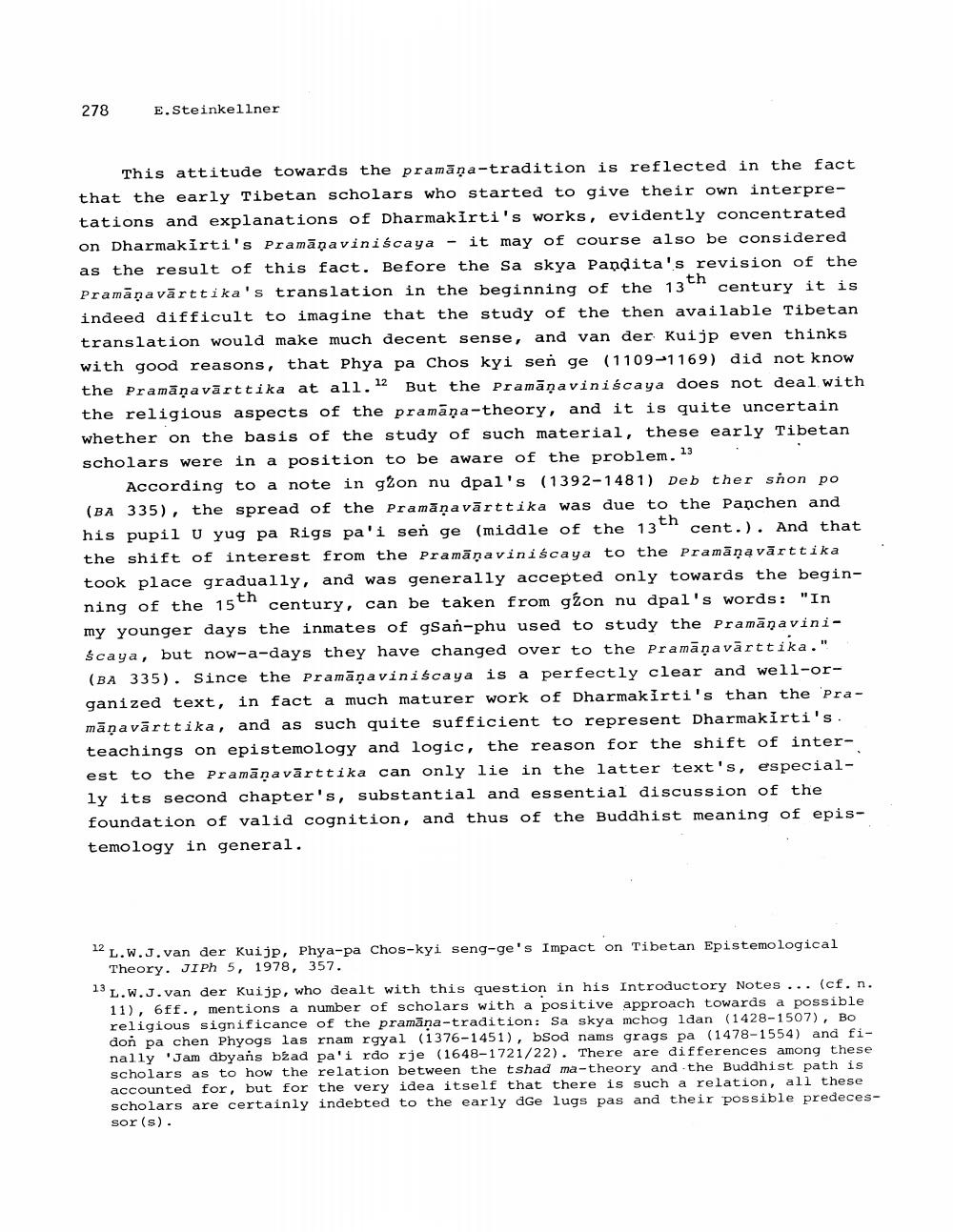Book Title: Meaning And Historical Significance Of Term Author(s): Ernst Steinkellner Publisher: Ernst Steinkellner View full book textPage 4
________________ 278 E.Steinkellner This attitude towards the pramāņa-tradition is reflected in the fact that the early Tibetan scholars who started to give their own interpretations and explanations of Dharmakirti's works, evidently concentrated on Dharmakirti's Pramāņaviniscaya - it may of course also be considered as the result of this fact. Before the Sa skya Pandita's revision of the Pramāņavārttika's translation in the beginning of the 13th century it is indeed difficult to imagine that the study of the then available Tibetan translation would make much decent sense, and van der Kuijp even thinks with good reasons, that Phya pa Chos kyi sen ge (1109-1169) did not know the Pramāna vārttika at all. 12 But the Pramāņaviniscaya does not deal with the religious aspects of the pramāņa-theory, and it is quite uncertain whether on the basis of the study of such material, these early Tibetan scholars were in a position to be aware of the problem. 13 According to a note in gzon nu dpal's (1392-1481) Debther snon po (BA 335), the spread of the Pramāna vārttika was due to the Panchen and his pupil u yug pa Rigs pa'i sen ge middle of the 13th cent.). And that the shift of interest from the Pramāņaviniscaya to the Pramāņavārttika took place gradually, and was generally accepted only towards the beginning of the 15th century, can be taken from gzon nu dpal's words: "In my younger days the inmates of gSan-phu used to study the PramāņaviniŚcaya, but now-a-days they have changed over to the pramāņavārttika." (BA 335). Since the Pramāņaviniscaya is a perfectly clear and well-organized text, in fact a much maturer work of Dharmakirti's than the 'Pramāņavārttika, and as such quite sufficient to represent Dharmakirti's. teachings on epistemology and logic, the reason for the shift of interest to the Pramāņavārttika can only lie in the latter text's, especially its second chapter's, substantial and essential discussion of the foundation of valid cognition, and thus of the Buddhist meaning of epistemology in general. 12 L.W.J. van der Kuijp, Phya-pa Chos-kyi seng-ge's Impact on Tibetan Epistemological Theory. JIPh 5, 1978, 357. 13 L.W.J. van der Kuijp, who dealt with this question in his Introductory Notes ... (cf. n. 11), 6ff., mentions a number of scholars with a positive approach towards a possible religious significance of the pramāna-tradition: Sa skya mchog ldan (1428-1507), Bo don pa chen Phyogs las rnam rgyal (1376-1451), Sod nams grags pa (1478-1554) and finally 'Jam dbyans bżad pa'i rdo rje (1648-1721/22). There are differences among these scholars as to how the relation between the tshad ma-theory and the Buddhist path is accounted for, but for the very idea itself that there is such a relation, all these scholars are certainly indebted to the early de lugs pas and their possible predecessor(s).Page Navigation
1 2 3 4 5 6 7 8 9 10 11
